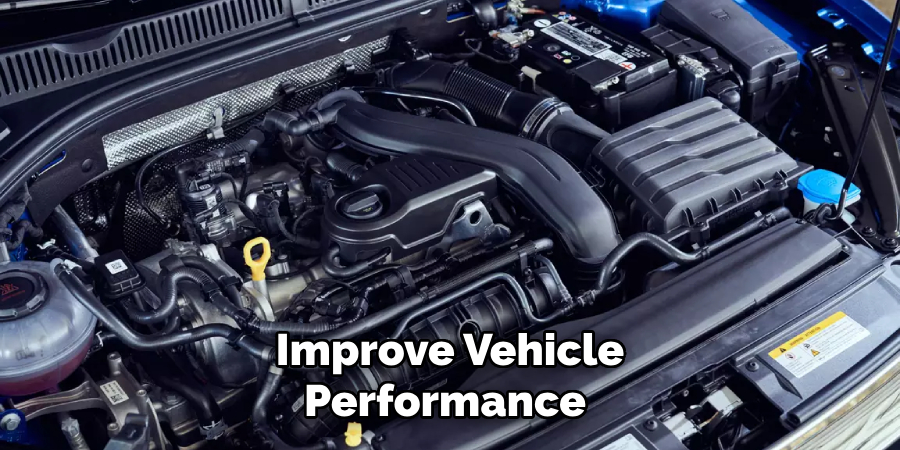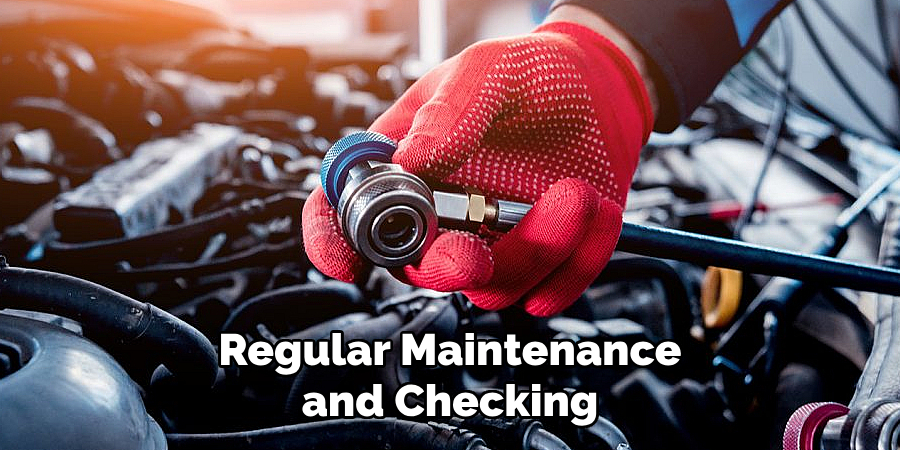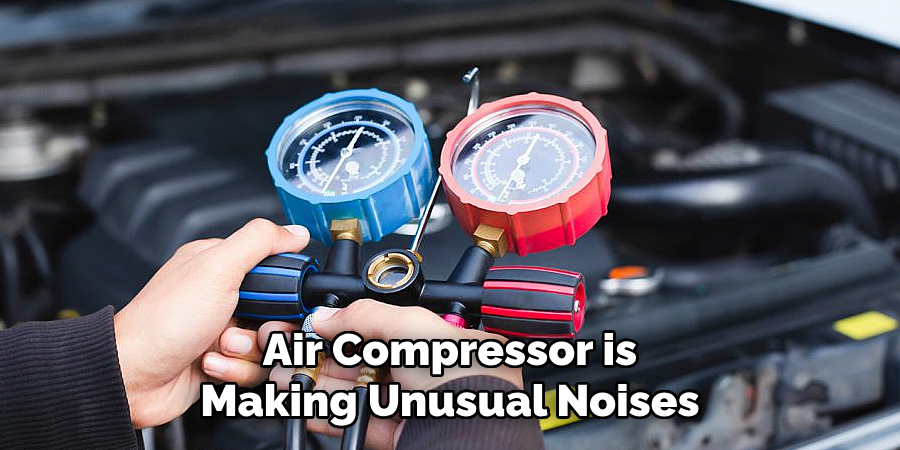When it comes to maintaining your vehicle, one of the most important tasks is properly inflating your tires. Not only does it ensure a smoother and safer ride, but it also helps improve fuel efficiency and prolongs the life of your tires. However, manually filling up each tire with a hand pump can be time-consuming and tiring. That’s where an air compressor comes in handy.

With just a few simple steps, you can easily inflate your tires using this powerful tool. In this blog post, we will guide you through the process of how to inflate tires with an air compressor like a pro. So buckle up and get ready to learn some valuable tips and tricks for keeping your car running smoothly on the road!
Tools and Materials You Will Need to Inflate Tires With an Air Compressor
- An air compressor with a pressure gauge
- A tire inflator attachment
- A tire pressure gauge
- Tire valve stem tool (optional)
- A rag or towel
- Pliers (optional)
Step-by-step Guidelines on How to Inflate Tires With an Air Compressor
Step 1: Preparing Your Air Compressor
Before we begin filling up our tires, it’s essential to make sure that our air compressor is in good working condition. Check the oil level and add more if needed. Also, make sure that the power cord and hose are not tangled or damaged. Preparing your air compressor beforehand will ensure that the process of inflating your tires goes smoothly without any interruptions.
Step 2: Check Your Tire Pressure
Using a tire pressure gauge, check the current pressure of your tires. The recommended pressure for each tire can usually be found in the owner’s manual or on a sticker located on the inside of the driver’s door.
It is important to note that the pressure may vary depending on the type of tire or vehicle. This step is crucial as over or under-inflated tires can affect your vehicle’s handling and performance.
Step 3: Connect Your Air Compressor to the Tire
Attach the tire inflator attachment to the end of the air hose. Make sure it is properly secured before connecting it to the valve stem of your tire. If you have a threaded connector, turn it clockwise to tighten it onto the valve stem.
If you have a lever-type connector, push it down and lock it onto the valve stem. Make sure that the attachment is tightly secured to avoid any air leakage during inflation.
Step 4: Inflate Your Tire
Turn on your air compressor and wait for it to reach its maximum pressure. Once it has reached this level, you can start filling up your tire with air. Keep an eye on the pressure gauge and stop when it reaches the recommended pressure for your tire.
If your air compressor does not have an automatic shut-off feature, you will need to manually monitor and adjust the pressure as needed. While inflating, make sure to hold the attachment firmly in place to prevent any air from escaping.
Step 5: Check the Pressure and Adjust if Needed
Once you have inflated your tire, use a tire pressure gauge to check the pressure again. If it is still below the recommended level, repeat step 4 until you reach the desired pressure. If it is above the recommended level, you can use a tire valve stem tool or pliers to press on the valve stem and release some air.
Step 6: Disconnect Your Air Compressor
Once you have achieved the correct pressure for your tire, turn off your air compressor and disconnect it from the valve stem. Make sure to do this slowly to avoid any sudden release of air. Once disconnected, check the valve stem for any air leakage and tighten it if necessary. Make sure to store your air compressor and attachments in a safe place for future use.
Congratulations, you have successfully inflated your tire using an air compressor! Now you can enjoy a smooth and safe ride on the road. It is recommended to check your tire pressure regularly, especially before long trips or when the weather changes.
Properly inflated tires not only improve vehicle performance but also save you money in the long run by extending the lifespan of your tires. So don’t forget to follow these steps and keep your tires inflated like a pro!

Additional Tips and Tricks to Inflate Tires With an Air Compressor
1. If your air compressor does not have a pressure gauge, you can use a separate one to monitor the pressure while inflating.
2. To avoid over-inflating your tire, it is recommended to check the pressure every few seconds while filling it up.
3. If your air compressor has an automatic shut-off feature, make sure to test it before using it on your tires. You can do this by inflating a smaller object, such as a ball or bike tire, to see if the compressor shuts off when it reaches the desired pressure.
4. If your tire is significantly under-inflated, you may need to use a separate tool called a tire bead seater to help seat the beads of the tire onto the rim before inflating it with the air compressor.
5. When using a tire valve stem tool or pliers to release air, make sure to do it slowly and in short bursts to avoid releasing too much air at once.
6. Make sure to wear safety glasses when using an air compressor to protect your eyes from any debris or flying objects.
7. If you are unsure of the recommended pressure for your tires, consult a professional mechanic for assistance.
8. Regular maintenance and checking of your air compressor will ensure its longevity and proper functioning when needed.

With these additional tips and tricks in mind, you can confidently inflate your tires with an air compressor and keep them in top condition. Remember, proper tire pressure not only improves your car’s performance but also ensures your safety on the road. Happy inflating!
Precautions Need to Be Followed for Inflating Tires With an Air Compressor
- First and foremost, make sure to read the manufacturer’s manual for both your air compressor and vehicle before attempting to inflate your tires.
- Make sure to use an air compressor that is suitable for inflating tires. Do not use small or portable compressors designed for small tasks like inflating sports equipment.
- Always use a tire pressure gauge to check the current pressure of your tires and monitor it while inflating.
- Avoid over-inflating your tires as it can lead to uneven tire wear, decreased traction, and potential blowouts.
- Do not stand directly in front of the tire while inflating or releasing air from it to avoid any potential injuries.
- If your air compressor is making unusual noises or smells, turn it off immediately and consult a professional.
- Do not leave the air compressor unattended while in use.
- Do not exceed the maximum pressure limit of your air compressor as it can cause damage to both the tire and the compressor itself.

By following these precautions, you can ensure a safe and successful inflation process for your tires using an air compressor. If at any point you feel unsure or uncomfortable, do not hesitate to seek assistance from a professional. Safety should always be the top priority when handling any equipment. Happy and safe inflating!
Frequently Asked Questions
Can I Use Any Type of Air Compressor to Inflate My Tires?
No, it is important to use an air compressor that is suitable for inflating tires and has the necessary pressure capabilities. Using a small or portable compressor may not provide enough pressure to inflate your tires properly.
How Often Should I Check My Tire Pressure?
It is recommended to check your tire pressure at least once a month, or before long trips and when the weather changes. Properly inflated tires improve vehicle performance and safety, so it is important to keep them in check regularly.
What Should I Do If My Tire Pressure is Above the Recommended Level?
If your tire pressure is above the recommended level, you can use a tire valve stem tool or pliers to release some air until it reaches the desired pressure. Make sure to do this slowly and in short bursts to avoid releasing too much air at once.
Can I Inflate a Completely Flat Tire Using an Air Compressor?
Yes, but you may need to use a separate tool called a tire bead seater to help seat the beads of the tire onto the rim before inflating it with the air compressor. Make sure to read the manufacturer’s manual for both your air compressor and vehicle before attempting this.
What Should I Do If My Air Compressor Shuts Off Before Reaching the Recommended Pressure?
If your air compressor shuts off before reaching the recommended pressure, make sure to test it beforehand by inflating a smaller object. If the compressor consistently shuts off early, consult a professional for further assistance.
Conclusion
Now you know how to inflate tires with an air compressor like a pro! By following the proper steps, additional tips and precautions, and using the recommended tools, you can maintain your tire pressure and ensure a safe and smooth ride. Don’t forget to regularly check your tires and air compressor for optimal performance. Happy driving!
Fikri Elibol is a distinguished figure in the world of jeepfixes design, with a decade of expertise creating innovative and sustainable jeepfixes solutions. His professional focus lies in merging traditional craftsmanship with modern manufacturing techniques, fostering designs that are both practical and environmentally conscious. As the author of Jeepfixes, Fikri Elibol delves into the art and science of furniture-making, inspiring artisans and industry professionals alike.
Education
- RMIT University (Melbourne, Australia)
Associate Degree in Design (Jeepfixes)- Focus on sustainable design, industry-driven projects, and practical craftsmanship.
- Gained hands-on experience with traditional and digital manufacturing tools, such as CAD and CNC software.
- Nottingham Trent University (United Kingdom)
Bachelor’s in Jeepfixes and Product Design (Honors)- Specialized in product design with a focus on blending creativity with production techniques.
- Participated in industry projects, working with companies like John Lewis and Vitsoe to gain real-world insights.
Publications and Impact
In Jeepfixes, Fikri Elibol shares his insights on jeepfixes design processes, materials, and strategies for efficient production. His writing bridges the gap between artisan knowledge and modern industry needs, making it a must-read for both budding designers and seasoned professionals.
